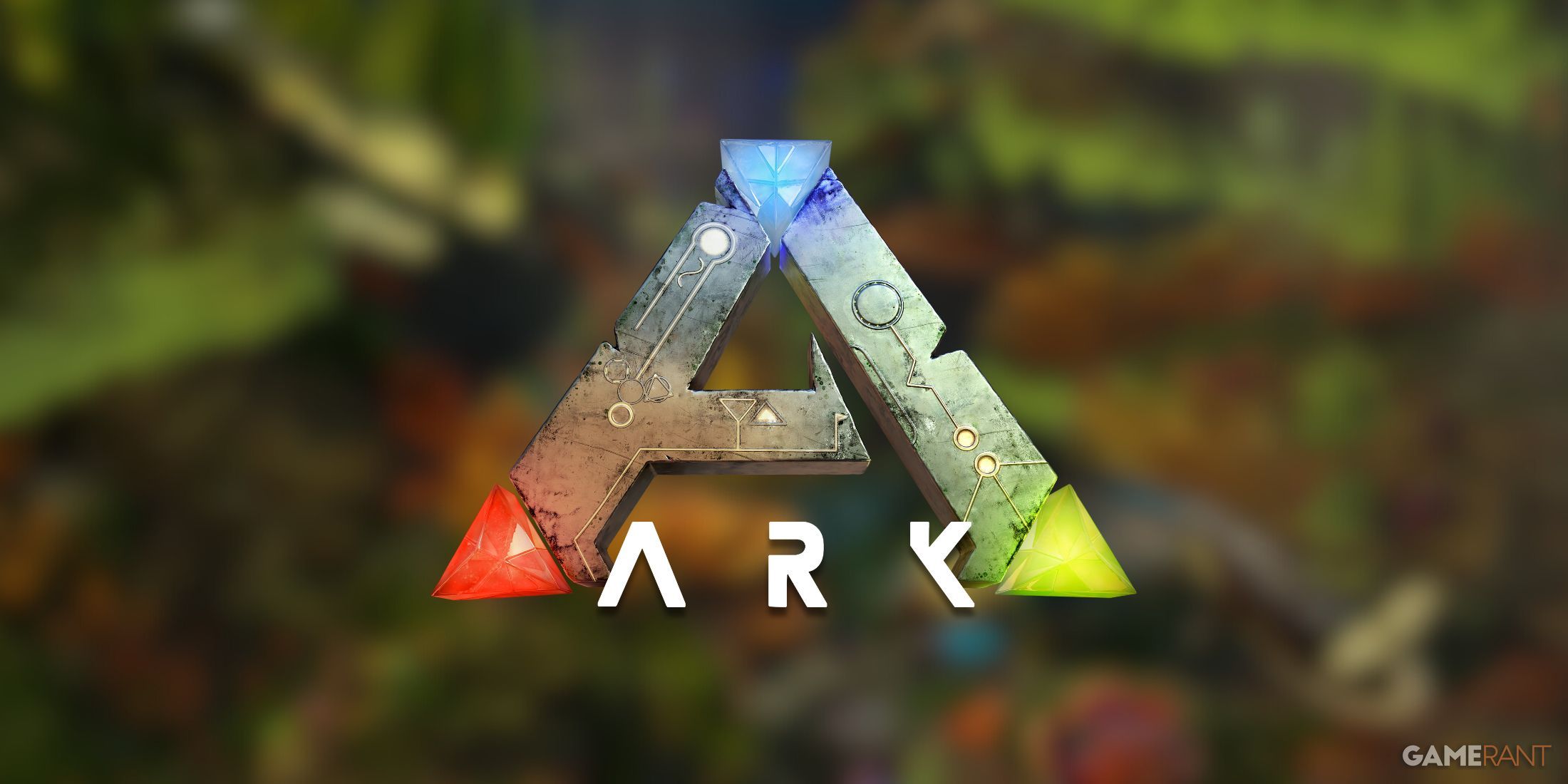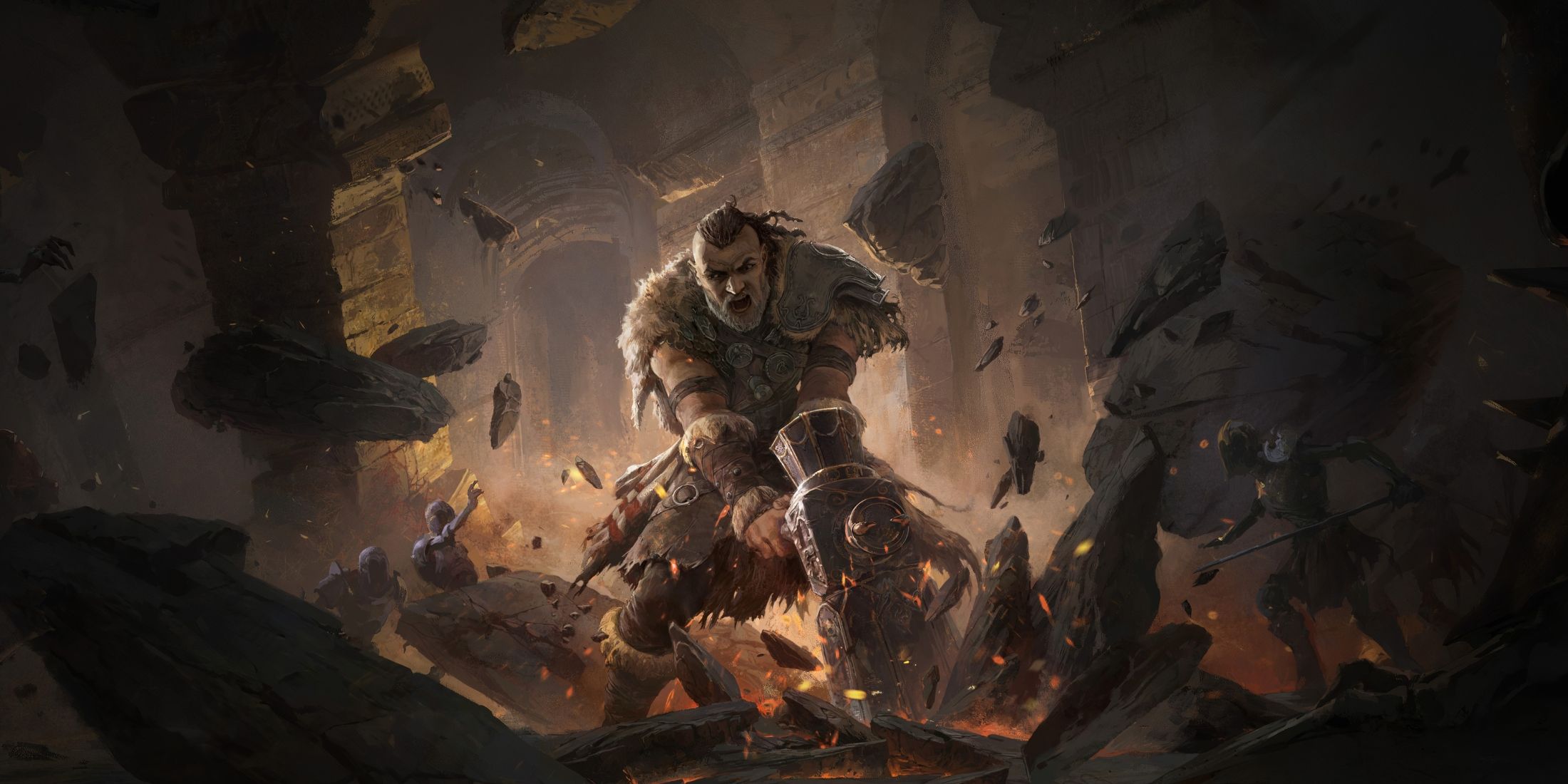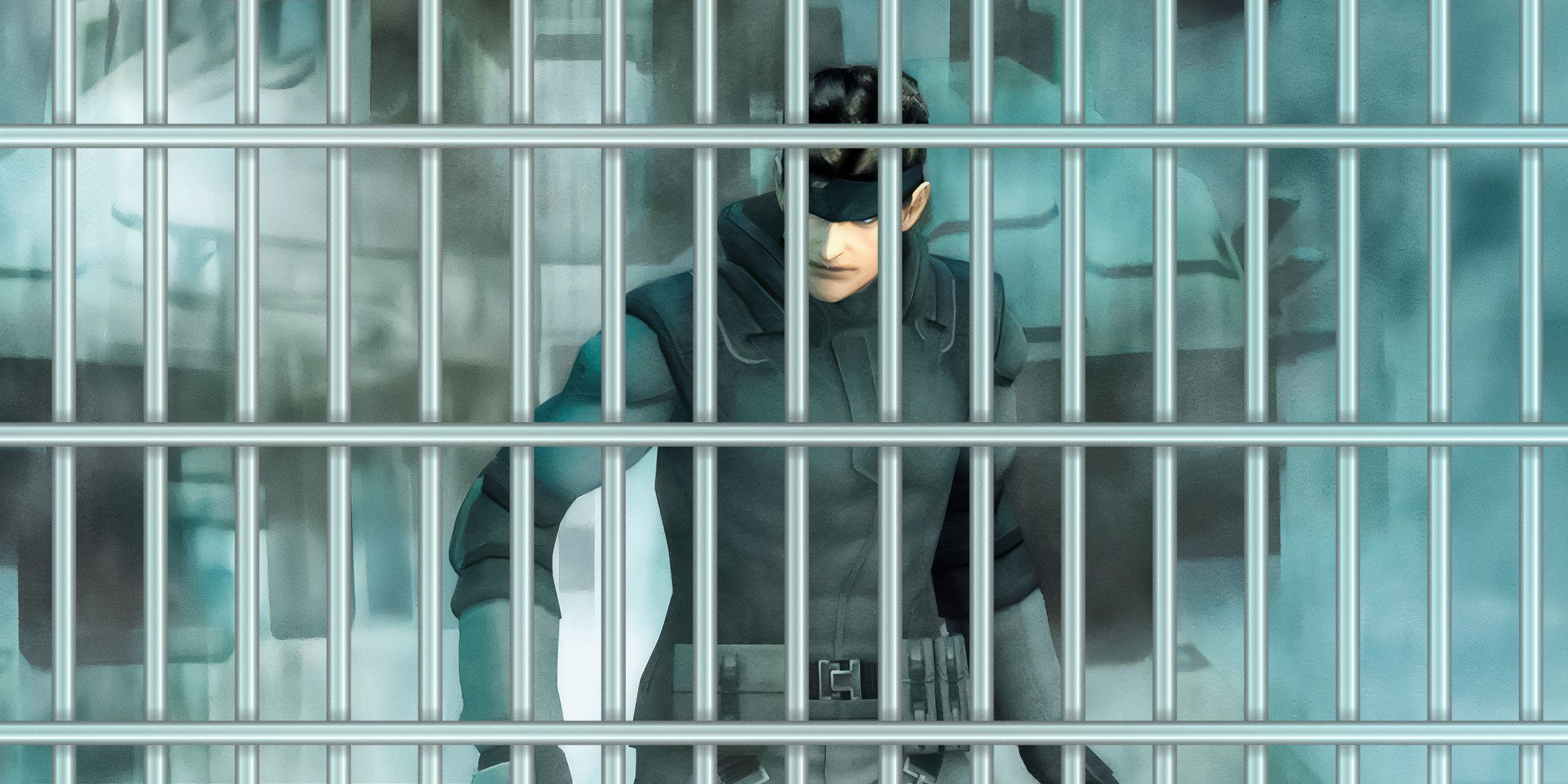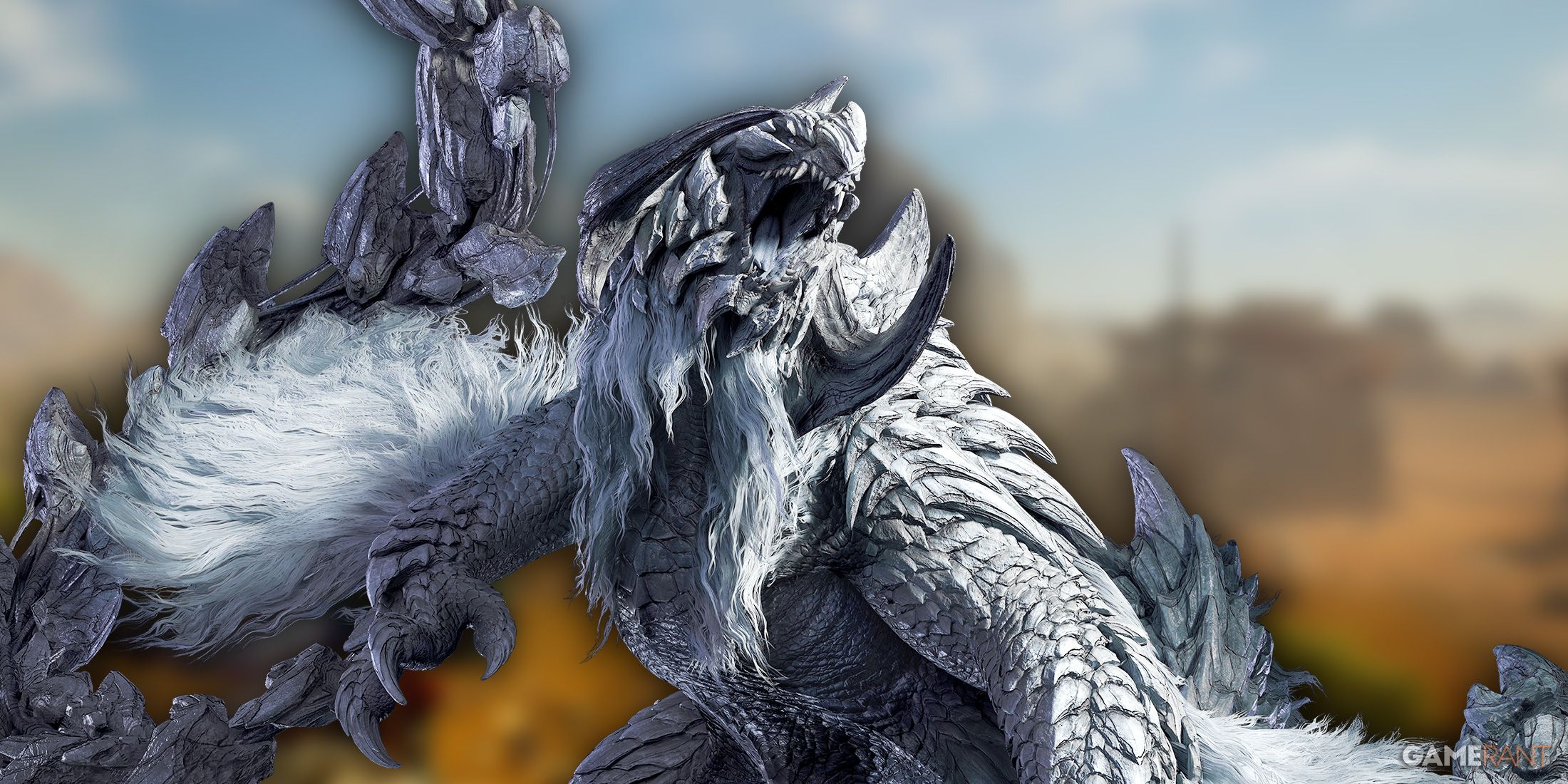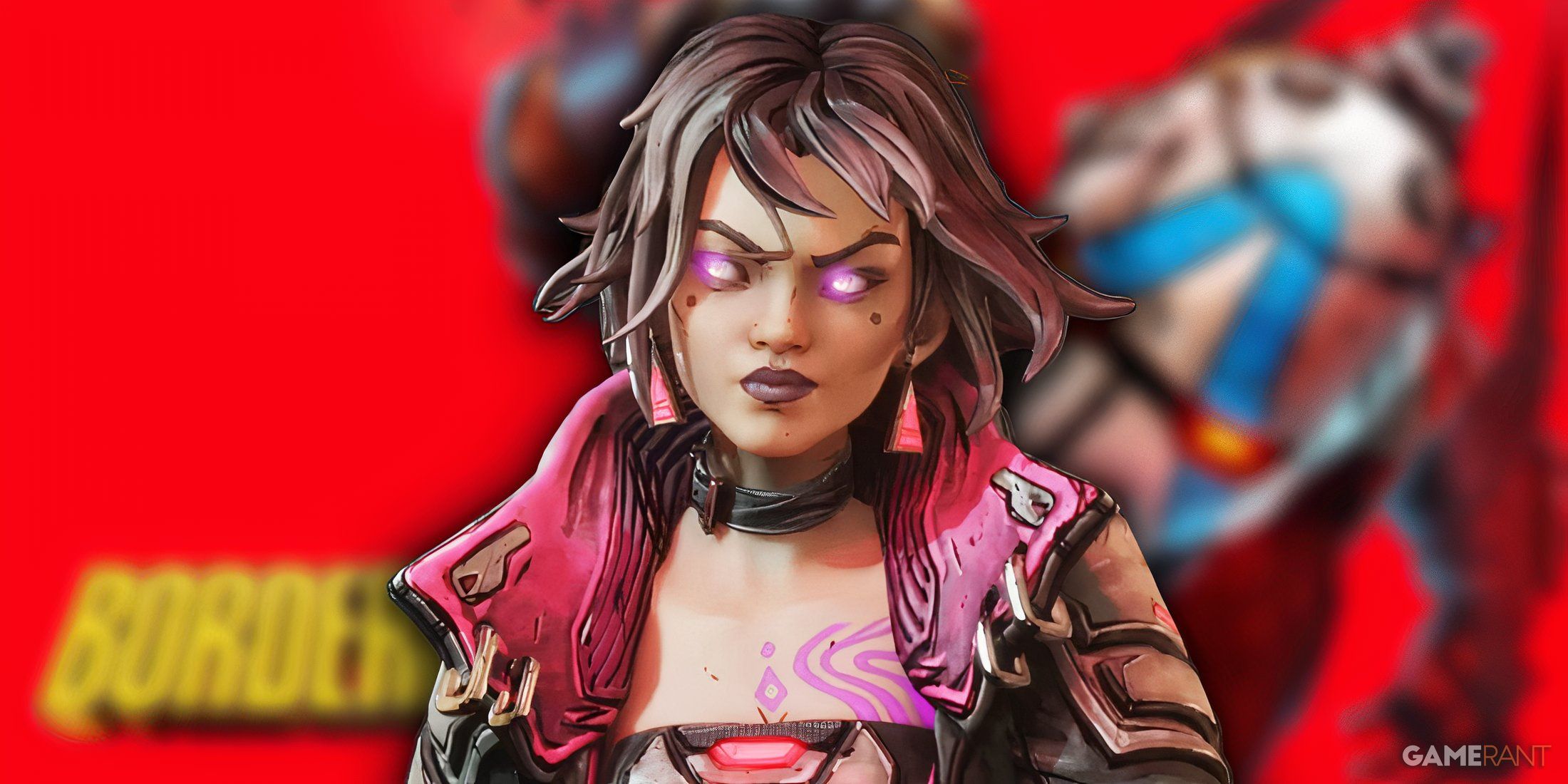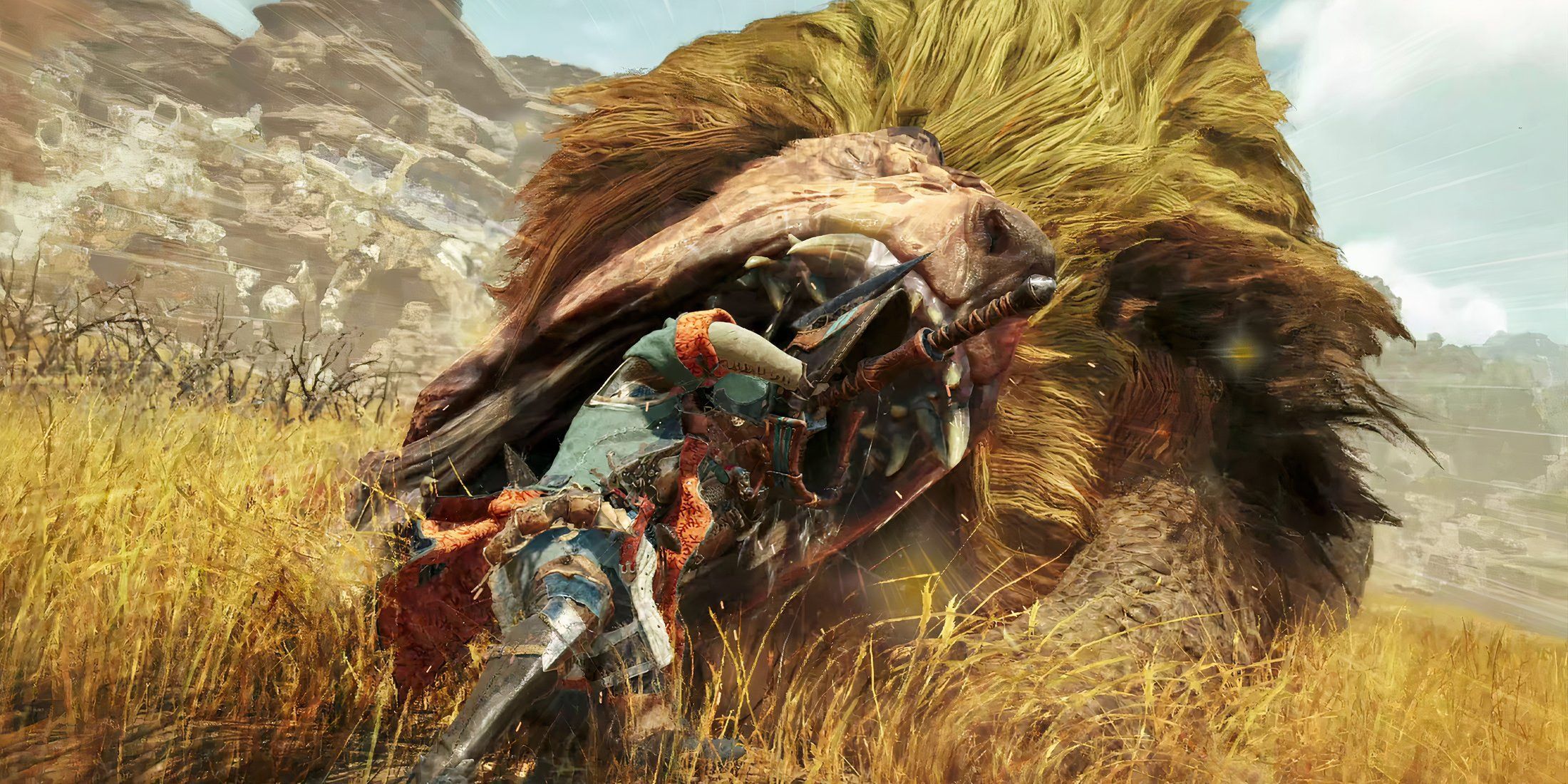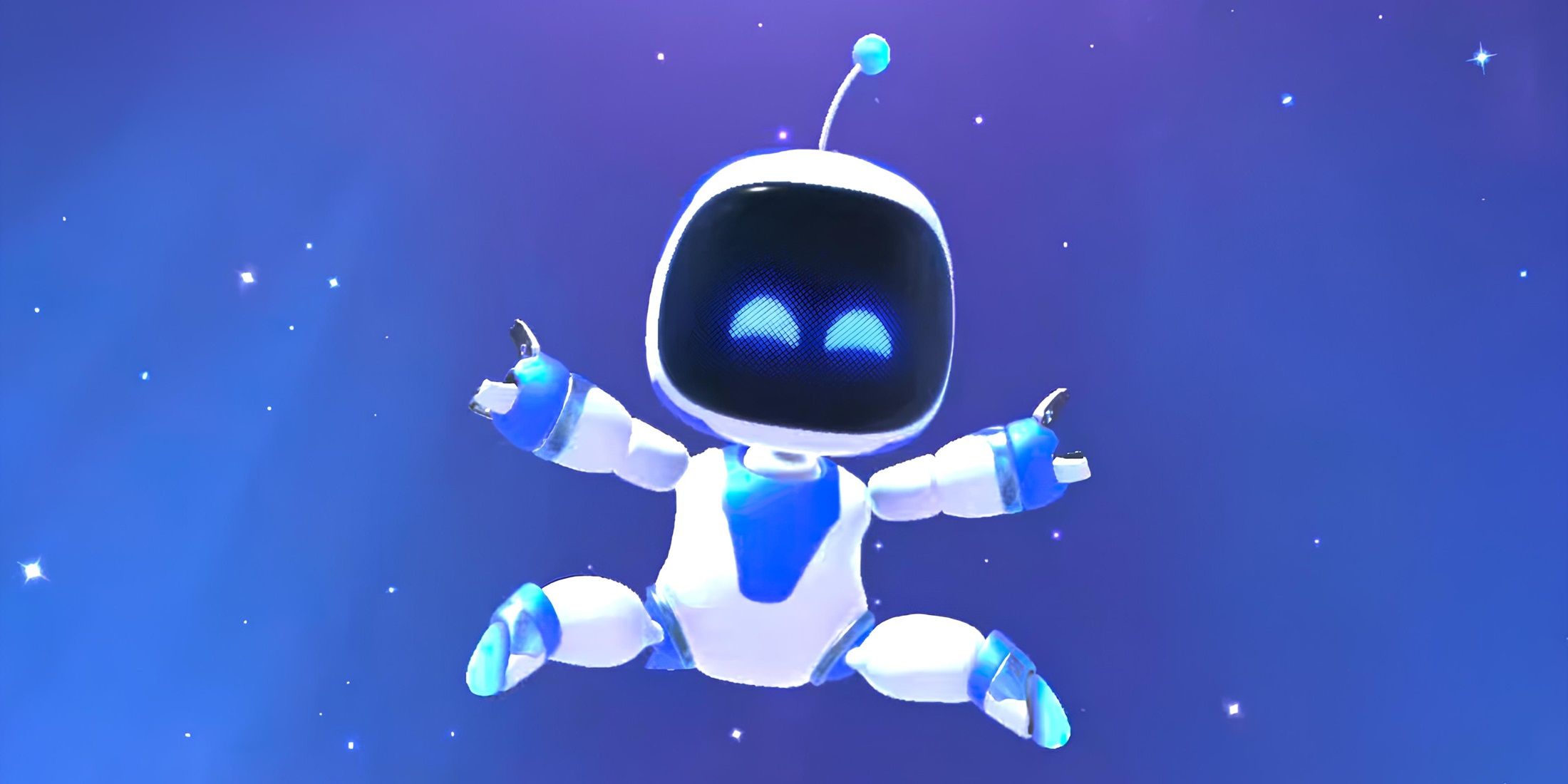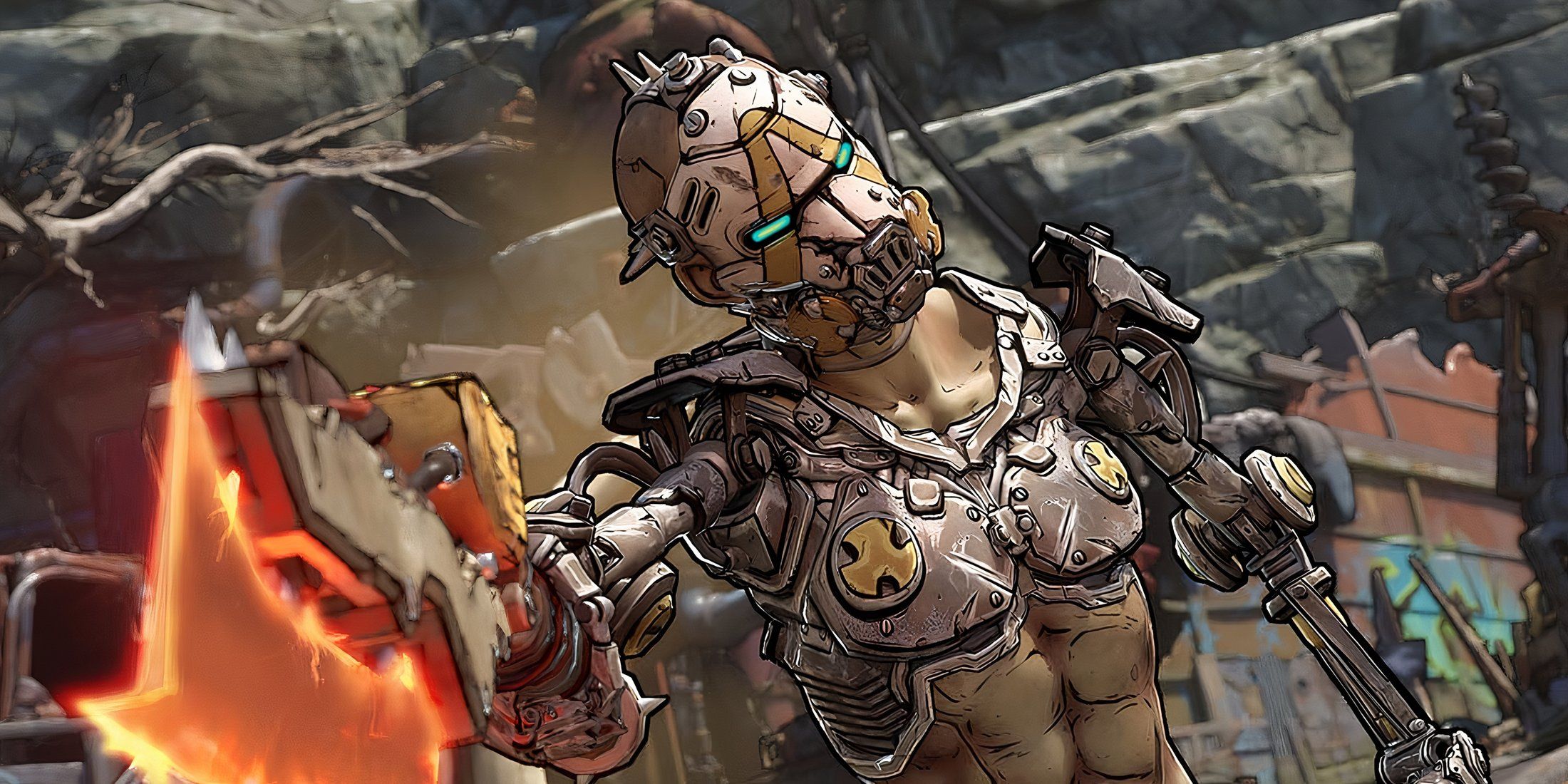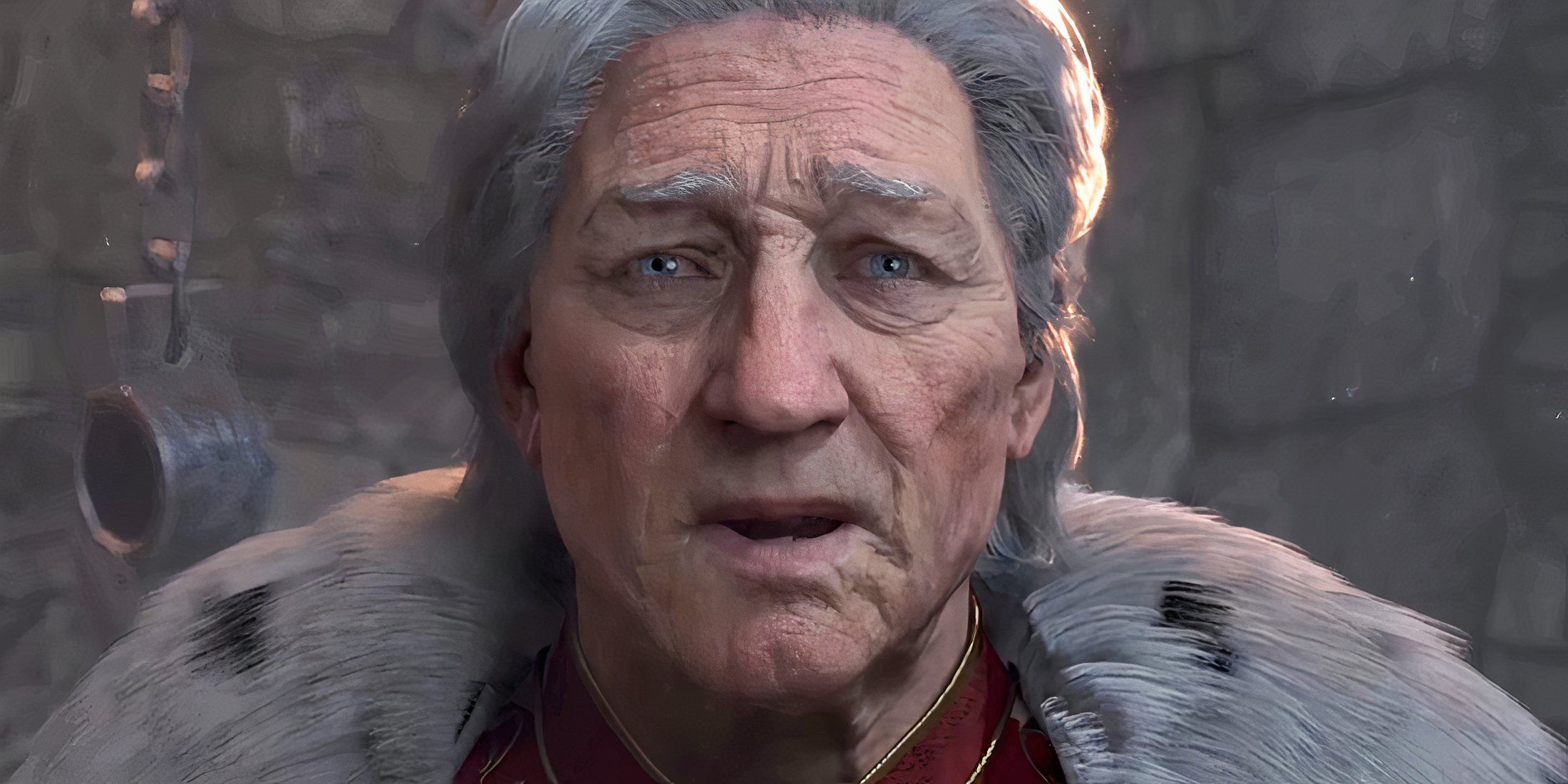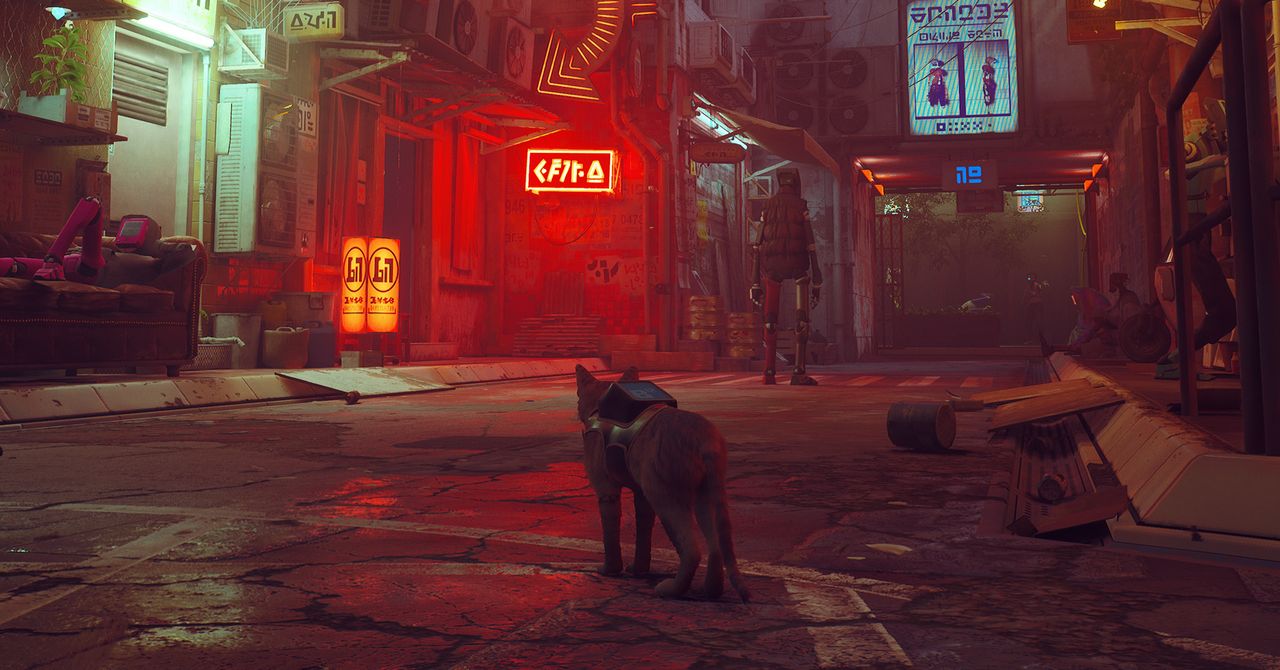
In Stray, the postapocalyptic adventure game from BlueTwelve Studio, players are cast as an unnamed orange and brown-striped tabby cat. At various points in this cat’s journey across a futuristic, neon-drenched city, button prompts will appear, floating over the arms of leather couches or hovering before the metal legs of bipedal humanoid robots. Press the corresponding controller inputs and the cat will rhythmically dig its claws into fabric or rub its head along the limbs of synthetic people. Sometimes it may even jump onto the lap of a reclining robot and curl into a tight ball to catch a quick snooze.
This kind of behavior is immediately familiar to anyone who’s spent time around cats, and it’s believably animated enough that the game appears to perfectly capture the animal’s essence. But spend enough time with Stray and the illusion fades, replaced by a series of contradictions. The feline protagonist may look exactly like a cat, but it doesn’t actually seem to be one in any sense beyond appearance.
A nagging sense of disbelief begins to creep in from the moment the player begins moving their character around the screen. The cat, as is to be expected of most video game avatars, responds immediately to the player’s directions. It hops neatly onto metal handrails and ductwork, following paths through the urban landscape as if guided by an omnipotent laser pointer. Unlike a real cat, it never seems wary of open spaces or doubtful that it can execute a superheroic leap from one spot to another. It never hides out of view to carefully monitor its surroundings.
Sign Up Today Sign up for our Games newsletter and never miss our latest gaming tips, reviews, and features.
Sign up for our Games newsletter and never miss our latest gaming tips, reviews, and features.Once it’s teamed up with an artificially intelligent drone called B-12, it also, well, doggedly follows instructions when real cats would be more likely to ignore them entirely. As Stray continues, it becomes difficult to ignore how essentially un-catlike the character becomes. The nimble little creature works toward specific goals, solving multistep puzzles that require abstract thinking. No matter what flashing lights or interesting smells it stumbles on, the cat stays entirely focused on tasks that have nothing to do with its species’ actual interests, like eating stinky fish treats, hunting prey, or finding warm, hidden spots to nap in for hours on end.
All of these points may seem like unfair criticism—nitpicks that demand more from a mainstream video game than it’s capable of reasonably offering—but they point toward the knot of contradictions that ultimately make Stray such a fascinating game. By considering the ways in which Stray’s cat protagonist really doesn’t act like a cat at all, a question forms: How would any video game maker authentically create an experience that captures what it might be like to inhabit the role of a nonhuman animal?
A cat’s world is basically unknowable to the human mind. As much as we anthropomorphize the animal’s behavior to make sense of it, cats are shaped by an evolutionary path that’s resulted in an outlook that differs greatly from our own. While we can comfortably live alongside domestic cats, attempting to imagine how another animal perceives our shared world requires a questioning of how we understand reality itself. Doing so isn’t just a tough proposition; it may also be, at this point in time at least, close to impossible.
Stray slinks in and out of engagement with this problem during its protagonist’s journey through the sci-fi city. Though its cat mostly acts in decidedly human ways, BlueTwelve Studio appears very aware of how difficult a task it set out for itself from the game’s premise onward, and has created a narrative that acknowledges its anthropomorphic design.

